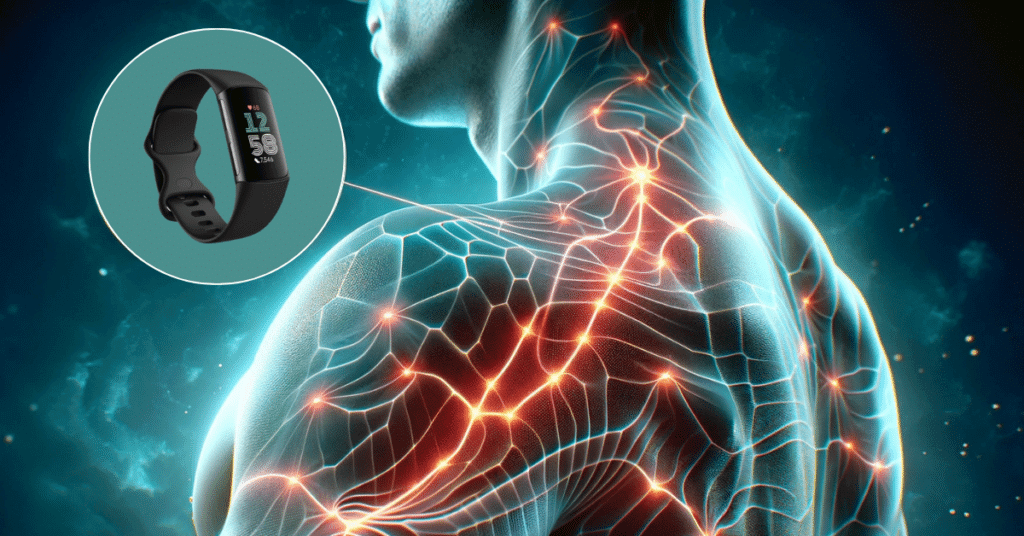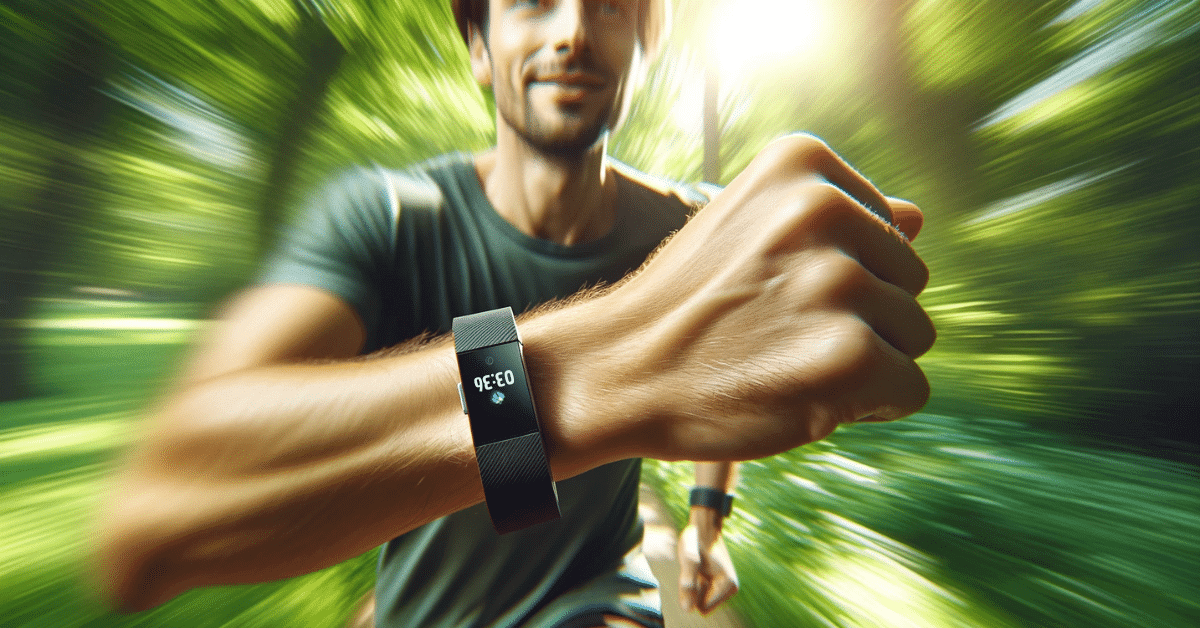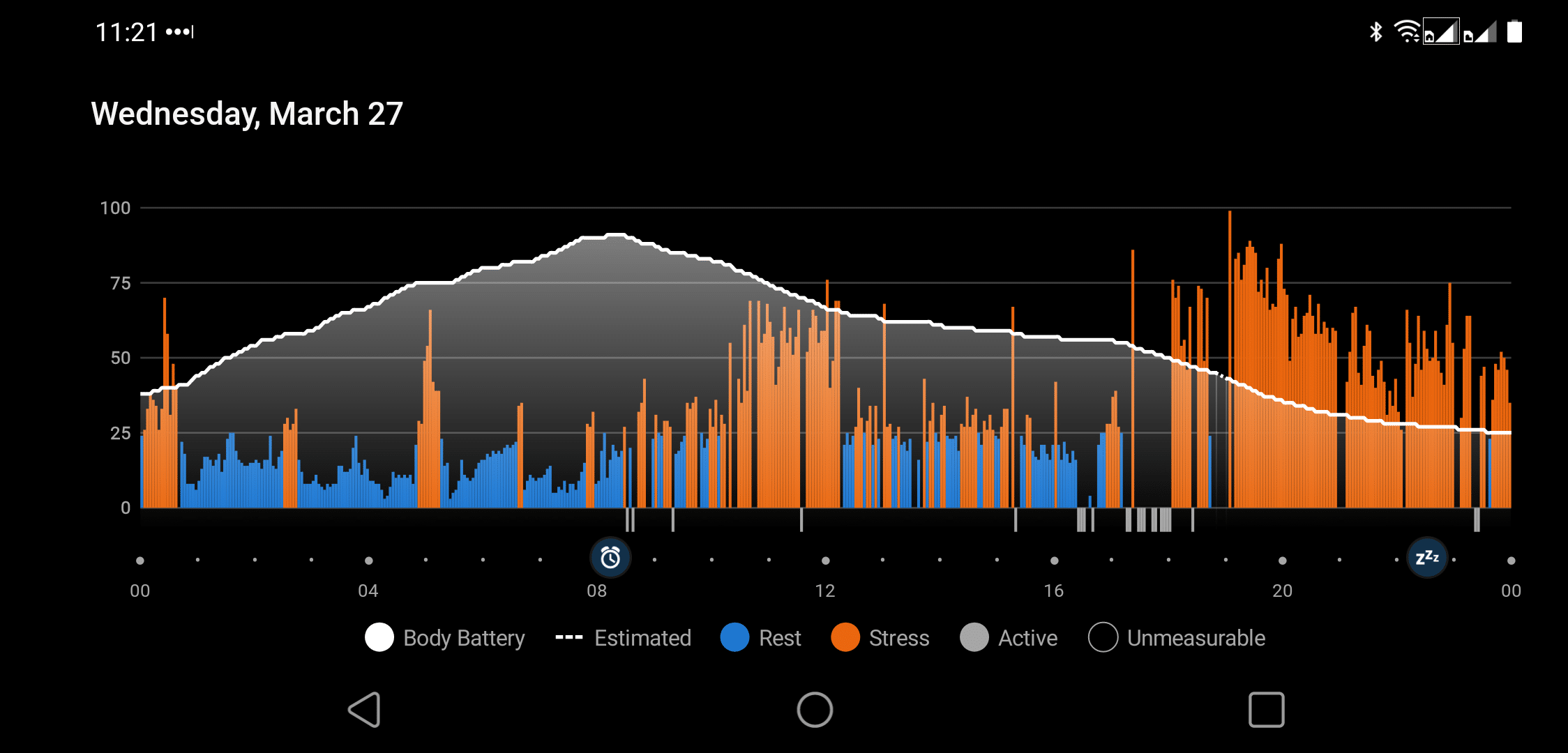Electrodermal Activity (EDA), integral for stress management and health monitoring, measures the skin’s electrical responses to emotional stimuli 1. Fitbit devices incorporate this cutting-edge technology, enabling users to track stress levels and emotional reactions, offering insights into their overall health and well-being.
What is the Fitbit EDA Sensor and How Does It Work?
The Fitbit EDA sensor measures electrodermal activity to track stress levels by detecting small electrical changes in your skin’s sweat level. It’s included in select Fitbit models and helps users understand their physical responses to stress, aiding in better stress management and overall health monitoring.
Fitbit EDA Sensor Insights
- Electrodermal Activity (EDA) measures your skin’s sweat levels – an indicator of stress.
- Benefits include identifying stress triggers and improving stress management techniques.
- Select Fitbit and Google Pixel Watch models feature the EDA sensor.
- Data interpretation helps in recognizing stress patterns for better emotional health.
- Integrating EDA data with mindfulness practices enhances well-being.
- Continuous monitoring provides a comprehensive view of your stress management score.
- Utilize the Fitbit app for detailed analyses and to track progress over time.
Understanding EDA and Its Role in Health
Electrodermal Activity (EDA) is not your everyday health buzzword. Think of it as the body’s own Morse code, sending signals through the skin when under stress or emotional duress. EDA sensors decode these signals, offering insights into our unseen physiological battles with stress.
When combined with metrics like heart rate variability and skin temperature tracking, EDA paints a complete picture of the body’s stress response. This trio of data not only flags the physical indications of stress but also cues us into how our bodies recover in calmer moments.
Why is this significant? Because it turns ambiguous feelings of stress into tangible data points. This clarity empowers us to tailor stress management strategies with precision, transforming abstract emotional experiences into a roadmap for well-being.
How Fitbit’s EDA Sensor Works
The Fitbit’s EDA sensor is quietly observing the electrical whispers of your skin. With each fluctuation in sweat levels — your body’s instinctive reaction to stress — the sensor captures changes, offering a window into your emotional world. It’s these minute shifts in skin conductance, almost imperceptible to us, that these sensors translate into a language we can understand.
But it’s not magic; it’s science — a blend of classical machine learning algorithms and heart rate monitoring that sifts through the noise to find the signal of stress. Pair this with skin temperature sensing, and you’ve got a holistic view of your body’s response to stress, a multi-dimensional snapshot that’s more telling than a mood ring on a teenager.
| Fitbit Model | EDA Sensor | Heart Rate Variability | Skin Temperature | Stress Management Score |
|---|---|---|---|---|
| Fitbit Sense 2 | Yes | Yes | Yes | Yes |
| Fitbit Versa 4 | No | Yes | No | Yes |
| Fitbit Charge 6 | No | Yes | No | Yes |
Tracking and Managing Stress with EDA
Think of your Fitbit’s EDA feature as your personal stress ledger, meticulously recording each emotional expenditure and deposit. This continuous monitoring offers a valuable dataset to track stress levels over time, painting a picture of how, when, and why stress visits you.
Armed with this data, you can start to identify your personal stress triggers. Maybe it’s that weekly meeting that sends your stress score skyrocketing, or perhaps it’s the coffee you swore was decaf. Recognizing these patterns allows you to adapt, whether that means tweaking your routines or adopting new stress-busting techniques like mindfulness sessions to better manage stress.

Your Fitbit doesn’t just highlight the problem; it also helps measure the effectiveness of your stress management solutions. By watching the ebb and flow of your Stress Management Score, you can gauge how well you’re coping with day-to-day stress, turning what once felt like a relentless wave into a manageable ripple.
Interpreting EDA Scan Results for Better Well-being
Initially, EDA numbers and graphs might look like ancient hieroglyphs, but with time, they reveal the narrative of your emotional and physical responses to stress. This deeper understanding transforms raw data into actionable insights, wielding the power to elevate your well-being.
What makes for a reading that signals a red flag? The answer is personal. As you become familiar with your baseline through continuous EDA sensor use, deviations become more apparent. These changes might prompt a visit to a professional or encourage you to reevaluate life’s stressors. It’s akin to having a personal health detective, piecing together the clues of night sweating, heart rate spikes, and moments of zen.

But it’s not all about identifying issues; it’s also about celebrating victories. Noticing a decline in stress markers after starting a new workout routine or mindfulness practice is like seeing a high score in your favorite game. These victories, small or monumental, underscore the impact of your efforts to manage stress, guiding you toward a healthier, more balanced life.
Enhancing Mindfulness and Emotional Awareness
While tracking stress levels provides data, integrating this information into mindfulness practices turns stats into well-being. It’s not just about observing the numbers; it’s about connecting with them on a personal level, using them as a tool to deepen your awareness and control over your own stress responses.
Imagine your EDA data as a feedback loop during mindfulness sessions. This biofeedback allows you to see in real-time how different thoughts or breathing techniques affect your stress levels, offering a personalized guide to what truly brings you peace. It’s like having a conversation with your nervous system, one where you’re both listening and being heard.
The goal? To use technology not as a crutch but as a catalyst for genuine self-improvement. By marrying the data from your Fitbit’s EDA sensor with the practice of mindfulness, you unlock a powerful synergy. This approach not only enhances your ability to manage stress but also paves the way for a lifestyle rooted in a deep understanding and respect for your body’s needs and responses.
Personal Thoughts
In my own exploration of stress management, integrating the Fitbit EDA sensor into my daily routine has been enlightening. It has provided me with tangible feedback on my stress levels, helping me to pinpoint and address my stressors more effectively.
Though not a magical fix, this tool has played a crucial role in my broader strategy for managing stress. It complements the scientifically-backed methods I’ve discovered, making a significant difference in regaining control over my stress and anxiety.
Frequently Asked Questions
Which Fitbit models come with the EDA sensor feature?
The EDA sensor is included in several of the newer Fitbit models, such as the Fitbit Sense 2. These devices are designed with advanced health and wellness features, including stress management tools that utilize the EDA sensor for tracking emotional arousal.
How can the EDA sensor help in stress management?
By measuring electrodermal activity, which indicates your body’s response to stress, the EDA sensor helps in identifying moments of stress or relaxation. Understanding these patterns allows users to take actionable steps towards better stress management, such as engaging in mindfulness practices or adjusting their lifestyle to reduce stress triggers.
Can the EDA sensor data improve daily health routines?
Yes, EDA sensor data can significantly enhance daily health routines by providing insights into stress levels and offering guidance on when to engage in relaxing activities. This data, combined with other Fitbit health metrics, can support users in creating a balanced routine that fosters both physical and mental health improvement.
How accurate is the EDA sensor for emotional health tracking?
While the EDA sensor provides valuable data on body responses to stress, its accuracy in tracking emotional health can vary based on individual differences and external factors. However, when used consistently as part of a holistic approach to wellness, it offers useful insights for enhancing emotional awareness and wellbeing.




